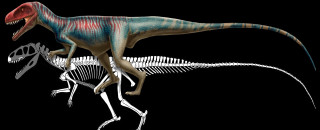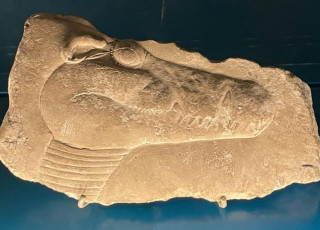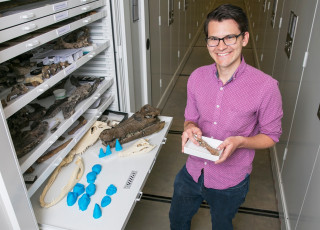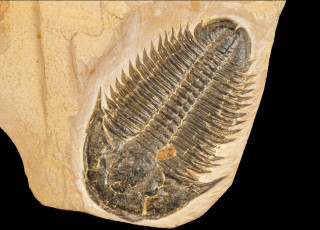Two-Legged Crocodile Ancestors Once Roamed Utah
By Randall Irmis
The thought of a crocodile or alligator usually conjures up visions of submerged reptiles lurking hot steamy swamps and rivers, but the early ancestors of crocodilians weren’t always these aquatic ambush predators. Rather than the sprawling reptiles we know today, 220 million years ago most crocodilian relatives were running around on land with legs underneath their body, similar to today’s mammals and birds.
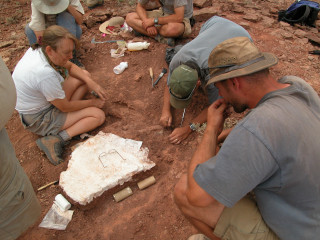
Crocodilians and dinosaurs (including birds) belong to a group of reptiles called archosaurs. They share a common ancestor some 250 million years ago, and the group subsequently split into two branches of the family tree – one leading to crocodilians, named Pseudosuchia, and one leading to pterosaurs, dinosaurs, and birds, named Avemetatarsalia. Rather than getting tongue-tied, paleontologists informally refer to these two branches as the crocodile-line and bird-line archosaurs.
During the Triassic Period (252-201 million years ago), the crocodile-line included a bewildering array of forms, from armored tank-like plant-eating aetosaurs, to large apex predators such as Postosuchus. One of these crocodile-line species is a Late Triassic animal named Poposaurus gracilis. The first fragmentary remains of Poposaurus were discovered in 1904 in Wyoming, and in the ensuing decades, rare isolated bones were found throughout the western U.S. For a long time, it was even thought to be a dinosaur because its hip and leg bones share some general similarities with early dinosaurs. It wasn’t until 1977 that paleontologists realized that Poposaurus was actually an early crocodilian relative. Even so, they had little idea of what the animal looked like and exactly who it was related to on the family tree, because no relatively complete fossil skeletons of the species had ever been discovered.
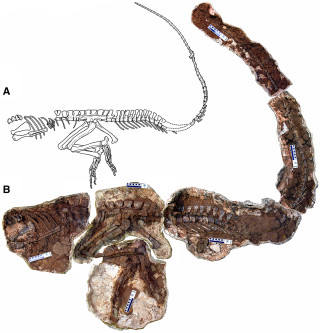
Line drawing (A) and photo (B) of the Poposaurus skeleton (YPM 57100) after excavation. Credit: Yale Peabody Museum of Natural History/Emma Schachner
All that changed in 2003, when a Yale University team discovered a new specimen Poposaurus in Grand Staircase-Escalante National Monument in southern Utah. As an undergraduate student and summer paleontological technician at Petrified Forest National Park at the time, I was fortunate enough to join the field team for a few days, and was the lucky one who first spotted the bones eroding from the hillside. It turned out to be a nearly complete skeleton of Poposaurus; the only pieces missing are parts of the skull and neck. After years of careful preparation by Marilyn Fox and subsequent study, the scientific paper describing the detailed skeletal anatomy of the specimen was published this week. This research was conducted by a team of scientists, led by Dr. Emma Schachner, an Assistant Professor of Cell Biology and Anatomy at Louisiana State University Health Sciences Center – New Orleans.
Our team discovered that although Poposaurus is clearly a crocodile-line archosaur, it is still remarkably similar to small meat-eating dinosaurs. This is an example of what scientists call evolutionary convergence, where two different lineages evolve similar features. Both branches of the family tree ran around upright on two legs, with much smaller hands and arms, and a skull filled with sharp serrated teeth for eating meat. Poposaurus is particularly well-adapted for running on open ground; the claws on its feet are broad and flat, similar to the hooves of cows or deer. By the end of the Triassic Period ~201 million years ago, two-legged crocodile-line archosaurs such as Poposaurus went extinct, whereas meat-eating dinosaurs became very diverse, eventually evolving into modern birds!
Randall Irmis is the chief curator and the curator of paleontology at the Natural History Museum of Utah and an associate professor in the Department of Geology & Geophysics, both parts of the University of Utah in Salt Lake City. The Museum's mission is to illuminate the natural world and the place of humans within it. In addition to housing outstanding exhibits for the public, NHMU is a research museum. Learn more.
